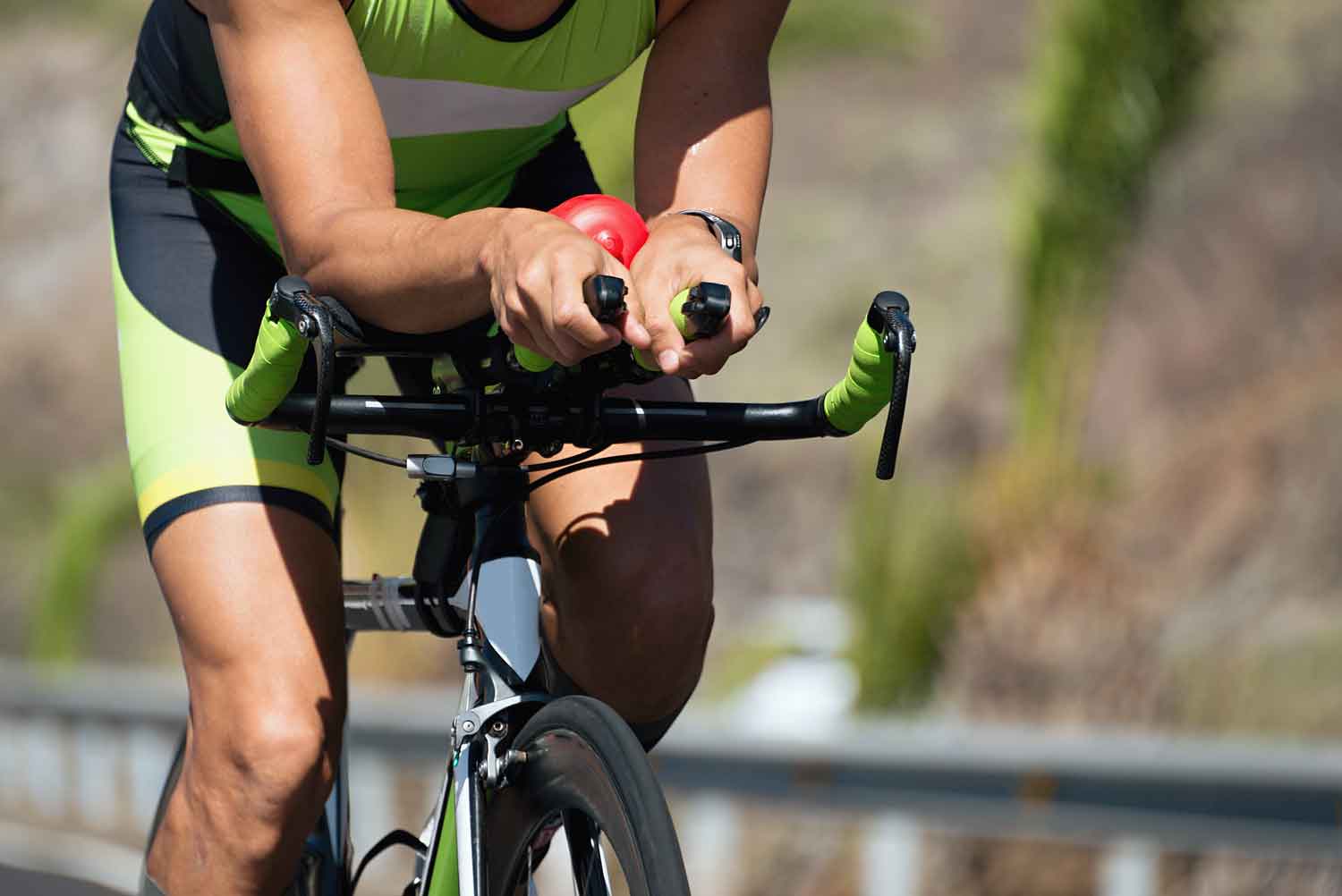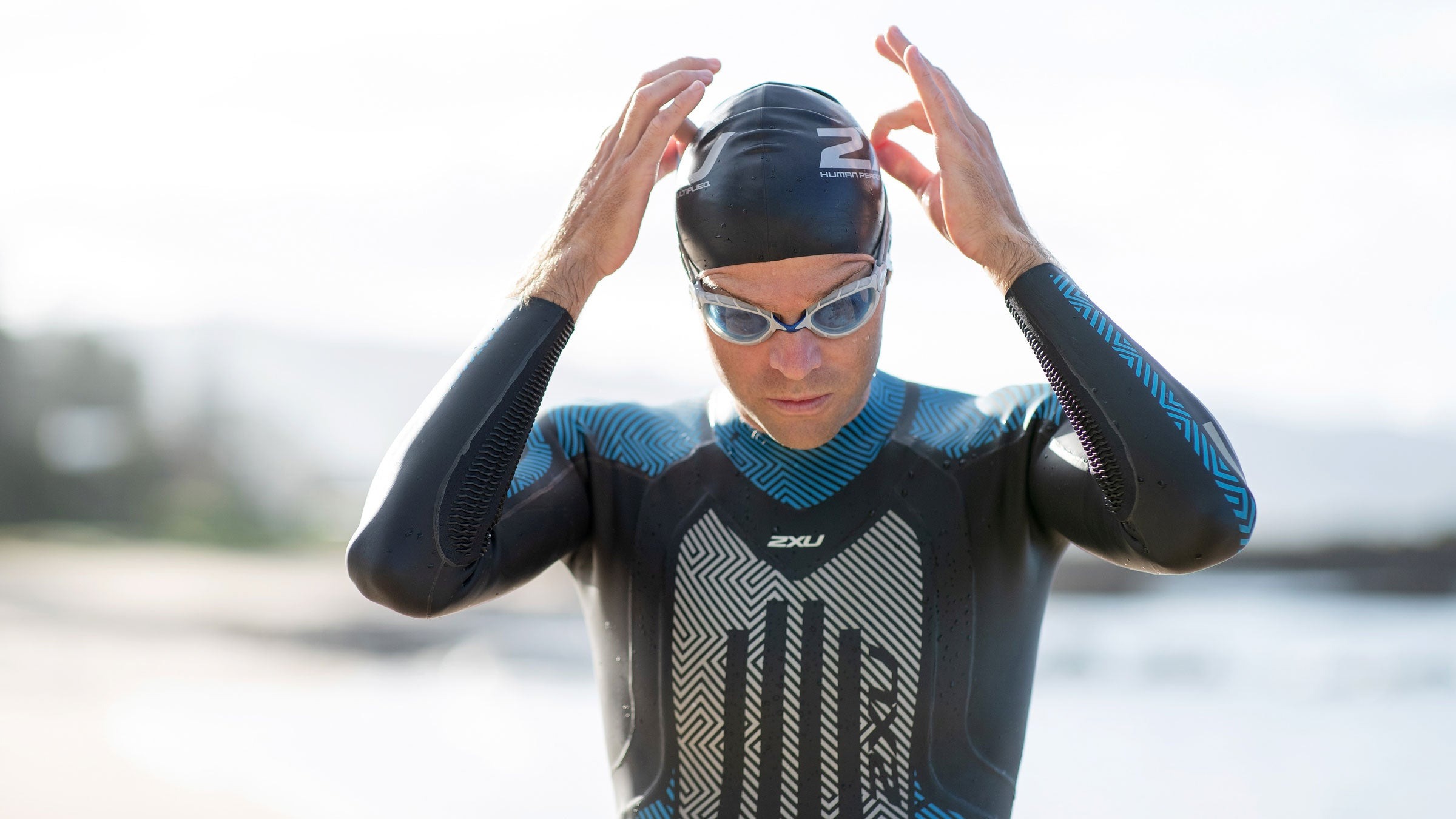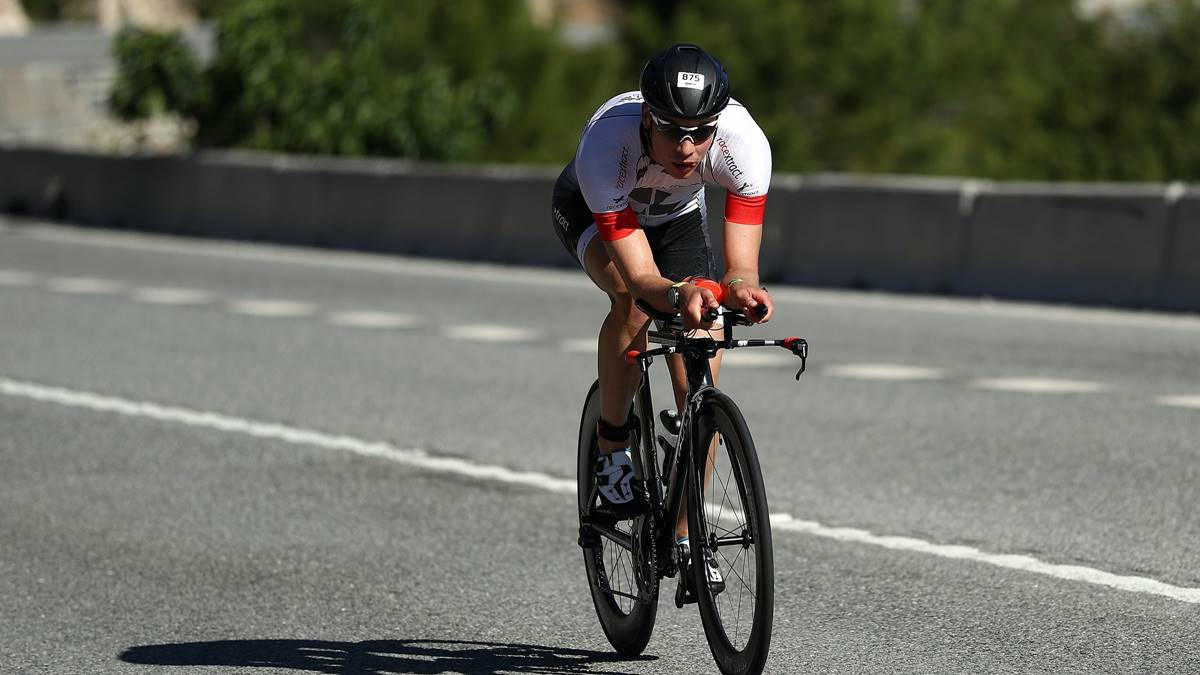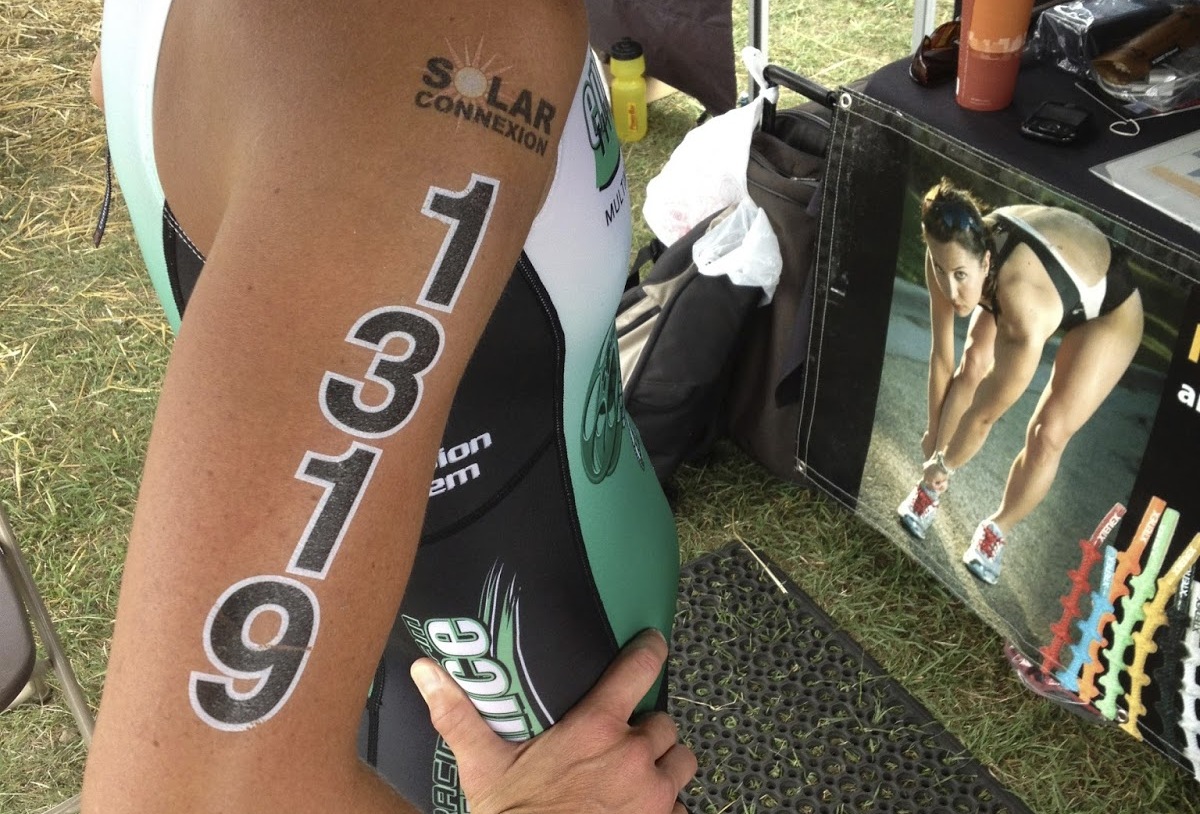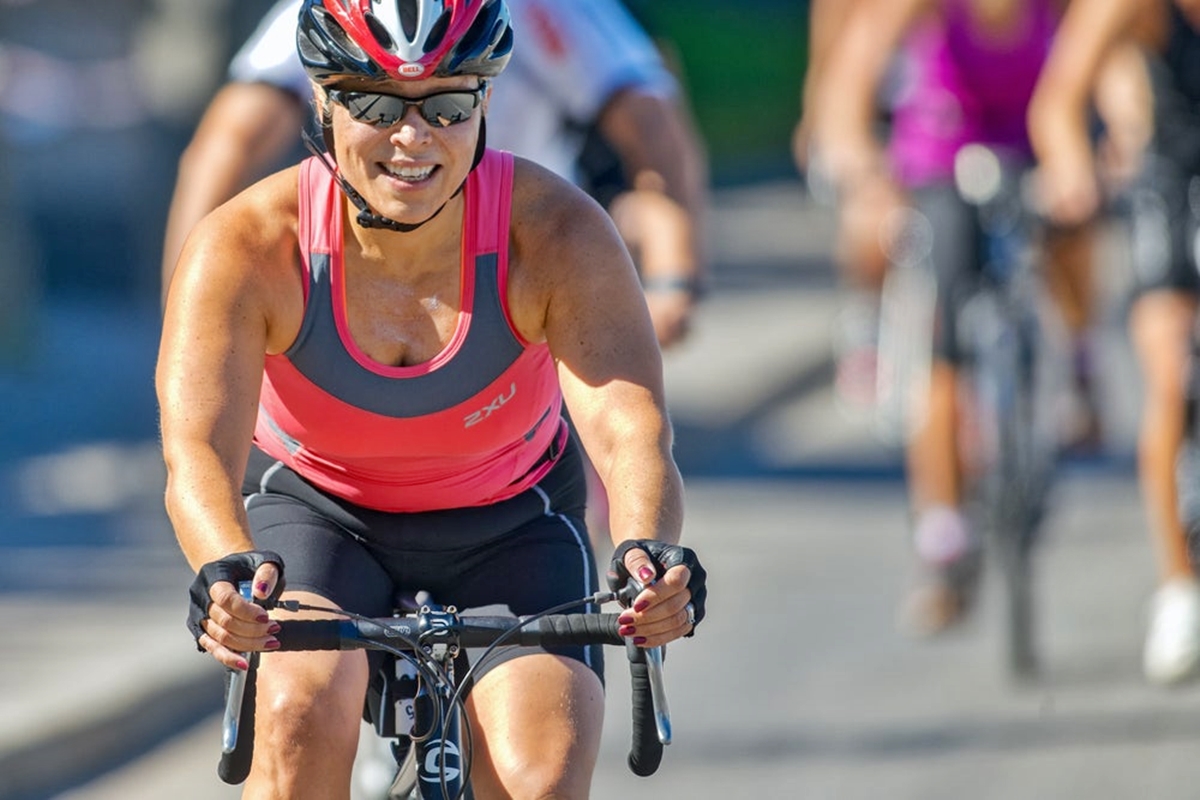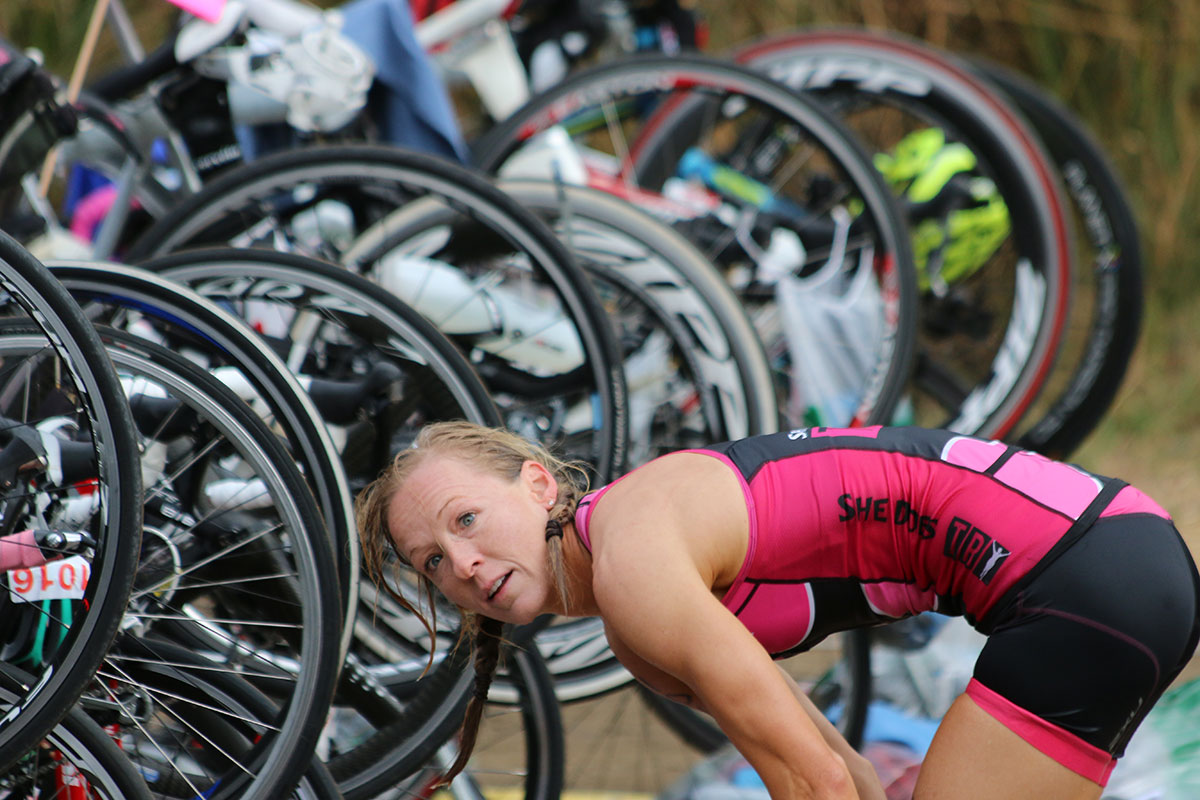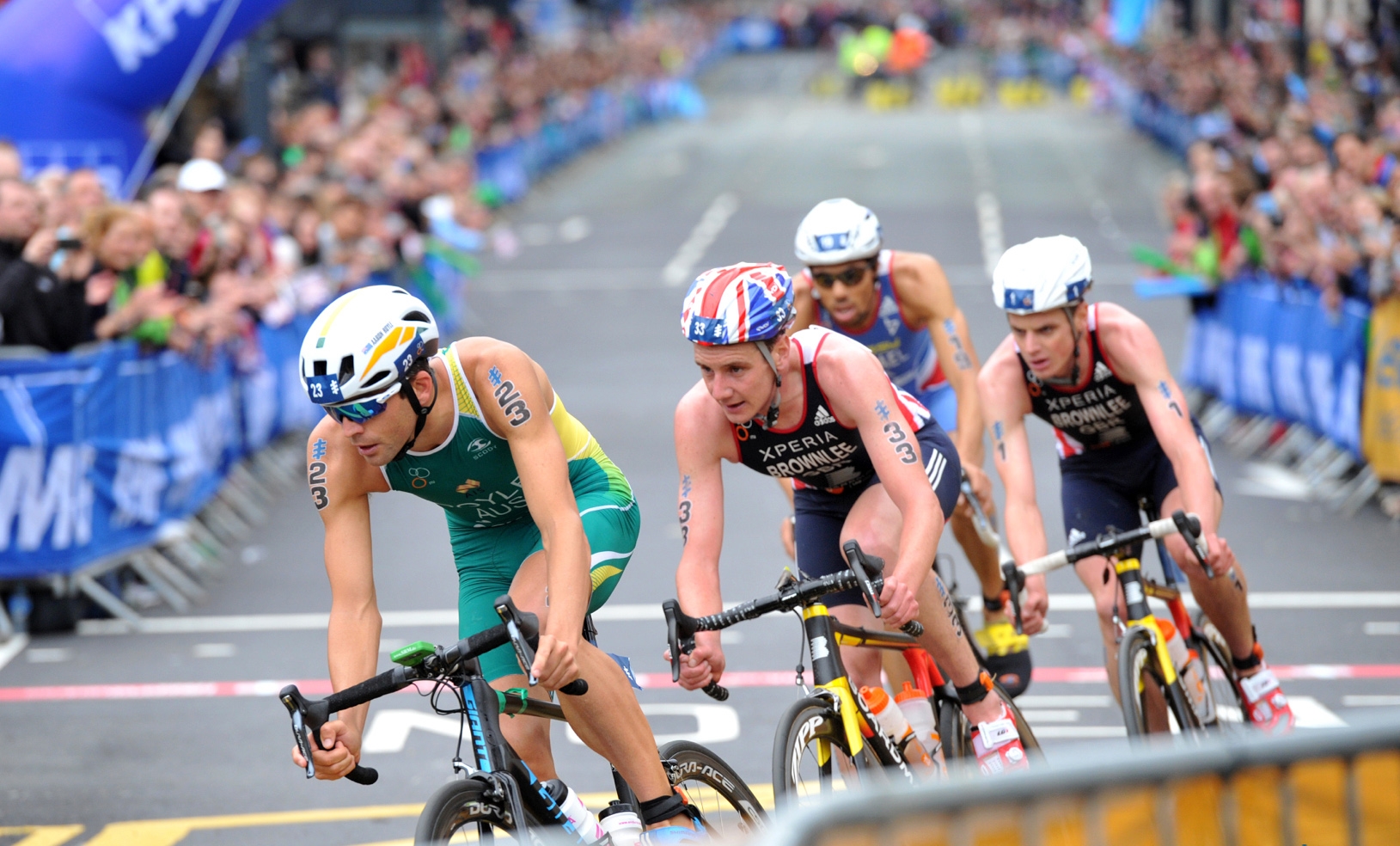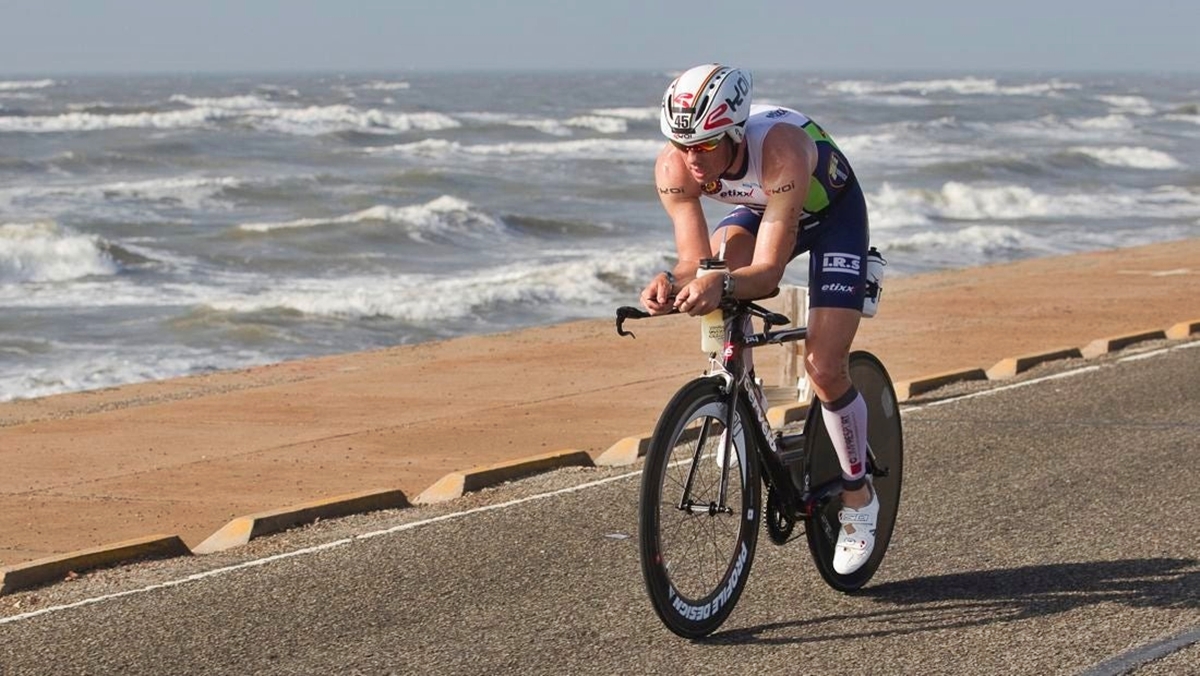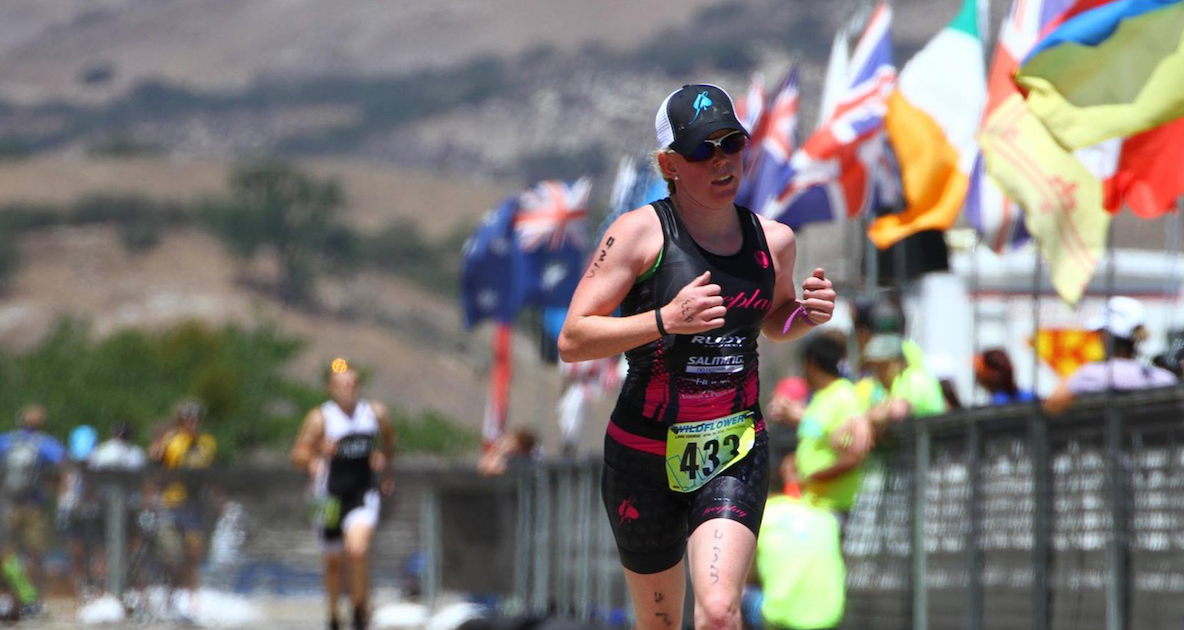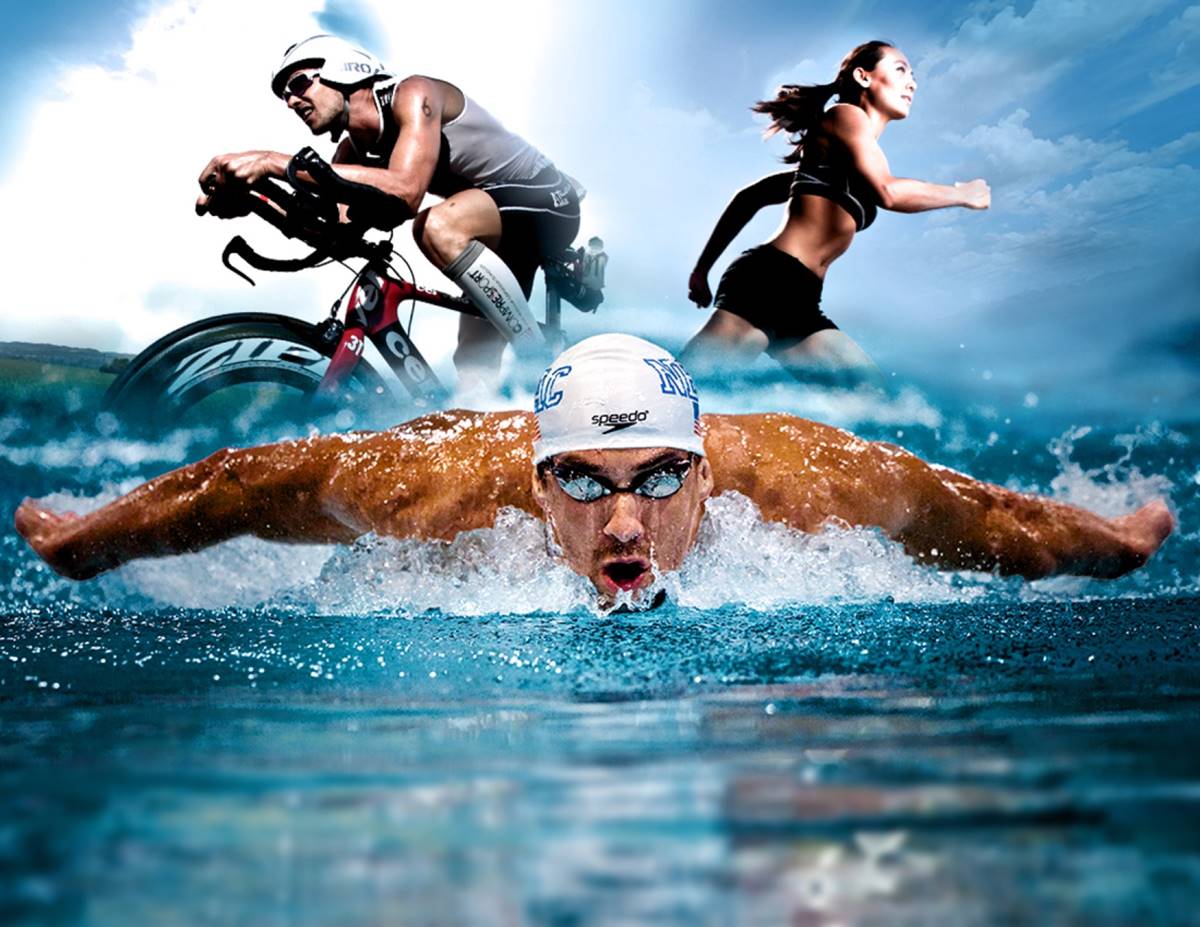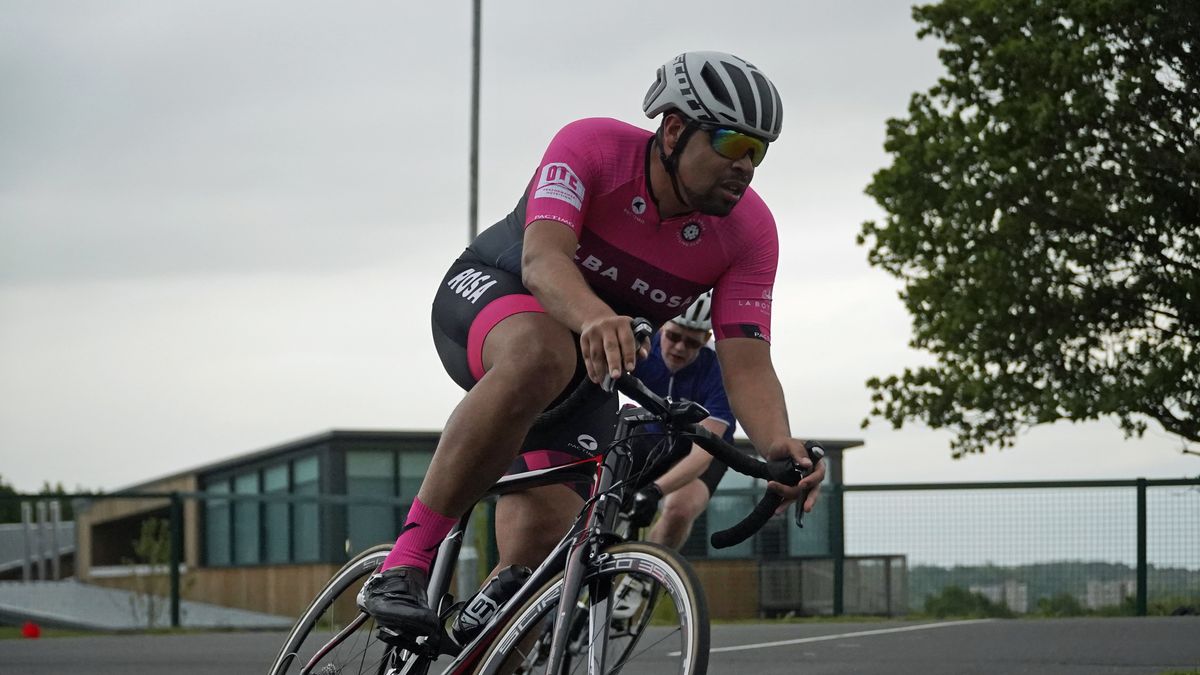

Featured
How To Lose Weight For Triathlon
Modified: January 2, 2024
Discover the expert tips and training strategies to lose weight and get in the best shape for your upcoming triathlon. This feature-packed guide will help you achieve your fitness goals
Introduction
Triathlon is a challenging multi-sport event that demands physical endurance, mental strength, and strategic planning. As a triathlete, one aspect that can significantly impact your performance is your weight. Whether you are a seasoned athlete or a beginner, understanding the importance of weight loss in triathlon can help you reach your full potential and achieve your goals.
Carrying excess weight can be detrimental to your performance in all three disciplines of a triathlon – swimming, cycling, and running. Excess weight puts additional strain on your body, causing increased energy expenditure and reduced speed. Furthermore, excess body fat can hinder your agility, slow down your transitions, and impact your overall efficiency during the race.
By focusing on weight loss, you can not only improve your performance but also enhance your overall health and well-being. However, it’s essential to approach weight loss in a sensible and sustainable manner to avoid detrimental effects on your body and athletic performance.
In this article, we will explore various strategies to lose weight effectively for triathlon. We will discuss how to assess your current weight, set realistic goals, create a sensible weight loss plan, and incorporate a balanced diet and exercise routine. Additionally, we will address challenges that may arise during your weight loss journey and provide valuable tips to stay motivated. It’s important to note that any weight loss endeavor should prioritize health and safety, and we will highlight precautions and guidelines to ensure that you achieve your weight loss goals in a responsible and sustainable way.
Whether you are competing in your first triathlon or aiming to improve your personal best, optimizing your weight can play a crucial role in your success. So, let’s dive in and discover how you can effectively lose weight for triathlon and propel yourself to new heights of performance and achievement.
Understanding the Importance of Weight Loss in Triathlon
Weight loss is a critical factor in triathlon because it directly affects your athletic performance. Shedding excess weight can improve your speed, endurance, and overall efficiency during the race. Let’s explore why weight loss is essential in each discipline of the triathlon.
- Swimming: Carrying extra weight in the water can negatively impact your buoyancy and slow down your swim speed. By reducing your weight, you can enhance your body’s position in the water, increase your stroke efficiency, and swim more effortlessly.
- Cycling: Excess body weight can make cycling more challenging, especially when climbing hills or maintaining high speeds. By shedding pounds, you can decrease the energy expenditure required for pedaling, improve your power-to-weight ratio, and enhance your overall cycling performance.
- Running: Carrying additional weight while running can put strain on your joints and increase the risk of injuries. By losing weight, you can lighten the load on your joints, improve your running economy, and increase your speed and endurance.
In addition to the physical benefits, weight loss can also have a positive impact on your mental and emotional state. Achieving your weight loss goals can boost your confidence, enhance your self-image, and provide a sense of accomplishment. This mental resilience can carry over to your training and race day, enabling you to push through challenging moments and perform at your best.
It’s important to note that weight loss should be approached with caution and within healthy boundaries. Rapid or excessive weight loss can lead to muscle loss, nutrient deficiencies, and a weakened immune system. It’s crucial to prioritize a balanced and sustainable weight loss approach that combines proper nutrition, regular exercise, and adequate rest.
In the next section, we will delve into the process of assessing your current weight and setting realistic goals to facilitate your weight loss journey. Remember, triathlon is a sport that celebrates progress, commitment, and personal growth, so embrace the journey and enjoy the transformative effects of losing weight for triathlon.
Assessing Your Current Weight and Goals
Before embarking on your weight loss journey for triathlon, it’s important to assess your current weight and set realistic goals. This process will provide a foundation for your plan and help you track your progress effectively.
First, start by determining your current weight. Use a reliable scale and record your weight accurately. It’s helpful to take measurements such as body fat percentage and waist circumference as well. These additional measurements provide a more comprehensive picture of your body composition and can be useful indicators of progress.
Next, evaluate your goals for weight loss. Consider factors such as your target weight, desired timeline, and overall health. It’s essential to set achievable and realistic goals that align with your body type, training level, and overall well-being.
When setting your weight loss goals, focus on losing a modest amount of weight at a sustainable rate. Aim for a gradual weight loss of 1-2 pounds per week. This steady progress will allow your body to adjust and adapt without compromising your energy levels or performance.
Moreover, it’s crucial to prioritize body composition rather than just a number on the scale. Weight loss should not be solely about the number on the scale but about reducing body fat percentage while maintaining muscle mass. This approach will enhance your performance and athletic abilities.
Consider consulting with a nutritionist, dietician, or coach who specializes in triathlon to help you set realistic goals. They can provide valuable guidance based on your specific needs, body composition, training schedule, and race goals.
Remember that weight loss for triathlon is a personal journey. While it’s natural to compare your progress to others, focus on your individual goals and the improvements you make along the way. Celebrate each milestone and acknowledge the positive changes you experience, both physically and mentally.
In the next section, we will delve into creating a sensible weight loss plan that combines proper nutrition, exercise, and a balanced approach to ensure that you reach your goals effectively and safely.
Creating a Sensible Weight Loss Plan
When it comes to weight loss for triathlon, it is important to create a sensible and realistic plan that focuses on long-term success rather than quick fixes. Here are key steps to follow in creating an effective weight loss plan:
- Set specific and measurable goals: Clearly define your weight loss goals and establish milestones to track your progress. This will help keep you motivated and accountable.
- Establish a calorie deficit: To lose weight, you need to create a calorie deficit by consuming fewer calories than you burn. Aim for a moderate deficit of 500-1000 calories per day to achieve a healthy and sustainable weight loss rate.
- Focus on nutrient-dense foods: Opt for whole, unprocessed foods that are rich in nutrients. Include a variety of fruits, vegetables, lean proteins, whole grains, and healthy fats in your diet. These foods will provide the necessary nutrients for your training and support your overall health.
- Practice portion control: Be mindful of your portion sizes and listen to your body’s hunger and fullness cues. Eating slowly and savoring your meals can help you feel satisfied with smaller portions.
- Stay hydrated: Drinking an adequate amount of water is crucial for weight loss and overall health. Aim for at least 8 cups of water per day and hydrate properly before, during, and after your training sessions.
- Limit processed foods and added sugars: Minimize your consumption of processed and sugary foods, as they are often high in calories and low in nutrients. These foods can hinder your weight loss progress and negatively impact your athletic performance.
- Practice mindful eating: Pay attention to your eating habits and emotions surrounding food. Practice mindful eating by savoring each bite, eating slowly, and paying attention to your body’s hunger and fullness signals.
- Plan and prepare your meals: Take the time to plan and prepare your meals in advance. This will help you make healthier choices, avoid impulsive eating, and stay on track with your weight loss goals.
- Seek professional guidance: Consider working with a nutritionist or dietician who specializes in sports nutrition to create a personalized weight loss plan tailored to your needs and goals.
- Monitor your progress: Regularly track your food intake, exercise routine, and weight loss progress. This will allow you to identify patterns, make adjustments, and celebrate your achievements along the way.
Remember, a sensible weight loss plan for triathlon should not only prioritize weight loss but also promote overall health and support your training. The key is to adopt sustainable habits that you can maintain long-term, leading to lasting weight management and improved performance in your triathlon endeavors.
Implementing a Balanced Diet for Weight Loss
A balanced diet plays a crucial role in achieving successful weight loss for triathlon. It provides the necessary fuel for training, supports recovery, and helps you maintain a healthy body composition. Here are key principles to follow when implementing a balanced diet for weight loss:
- Eat a variety of nutrient-dense foods: Include a wide range of fruits, vegetables, whole grains, lean proteins, and healthy fats in your diet. These foods provide essential vitamins, minerals, and antioxidants to support your overall health and improve athletic performance.
- Focus on portion control: Practice mindful eating and be aware of your portion sizes. Use smaller plates, measure your food, and listen to your body’s hunger and fullness signals. This will help you maintain a calorie deficit while ensuring you get adequate nutrition.
- Monitor your macronutrient intake: Pay attention to the composition of your meals and ensure a proper balance of carbohydrates, proteins, and fats. Carbohydrates provide energy, proteins support muscle repair and growth, and fats help with hormone production and vitamin absorption.
- Avoid excessive restriction: While it’s important to create a calorie deficit for weight loss, avoid extreme diets or overly restrictive eating habits. These can lead to nutrient deficiencies, low energy levels, and potential burnout. Focus on sustainable changes that you can maintain for the long term.
- Optimize pre- and post-workout nutrition: Fuel your training sessions with a combination of carbohydrates and protein. Prioritize complex carbohydrates for sustained energy and include lean protein sources to support muscle recovery and growth.
- Stay adequately hydrated: Proper hydration is crucial for weight loss and optimal performance. Drink water throughout the day and ensure adequate fluid intake before, during, and after your training sessions.
- Minimize processed and sugary foods: Reduce your consumption of processed foods, sugary beverages, and snacks high in added sugars. These empty-calorie foods can hinder your weight loss progress and negatively impact your overall health.
- Plan and prepare your meals: Take the time to plan your meals and snacks in advance. This will help you make healthier choices, avoid impulsive eating, and stay on track with your weight loss goals.
- Listen to your body: Pay attention to how certain foods make you feel. Adjust your diet based on your individual preferences, tolerances, and performance. Experiment with different foods and meal timings to find what works best for you.
- Seek professional guidance: Consider working with a registered dietitian who specializes in sports nutrition to create a personalized diet plan that aligns with your specific needs and goals.
Remember, a balanced diet for weight loss should support your training and overall health. It’s important to adopt sustainable and enjoyable eating habits that you can maintain for the long term. By nourishing your body with the right foods, you’ll optimize your weight loss efforts and fuel your triathlon performance.
Designing an Effective Exercise Routine
Implementing an effective exercise routine plays a significant role in weight loss for triathlon. It not only helps you burn calories but also improves your cardiovascular fitness, builds strength, and enhances your overall performance. Here’s how you can design an exercise routine that supports your weight loss goals:
- Include a combination of cardiovascular exercises: Incorporate activities such as swimming, cycling, running, or rowing to elevate your heart rate and burn calories. Aim for at least 150 minutes of moderate-intensity cardio each week, gradually increasing the duration and intensity over time.
- Incorporate high-intensity interval training (HIIT): HIIT involves alternating between periods of high-intensity exercise and short recovery periods. This type of training can maximize calorie burn in a shorter amount of time and boost your metabolic rate even after the workout.
- Integrate strength training: Incorporate resistance exercises into your routine to build lean muscle mass. Strength training increases your metabolic rate and helps you burn calories even at rest. Focus on exercises that target major muscle groups, such as squats, lunges, push-ups, and deadlifts.
- Include core exercises: A strong core is essential for stability, balance, and efficient movement. Incorporate exercises like planks, Russian twists, and bridges to strengthen your core muscles.
- Don’t forget about flexibility and mobility: Incorporate stretching, yoga, or Pilates into your routine to improve your flexibility, joint mobility, and prevent injuries. Flexibility exercises can also enhance your recovery and relaxation.
- Vary your workouts: Avoid monotony by incorporating a variety of activities and workouts into your routine. This not only keeps things interesting but also challenges your body in different ways, preventing plateaus and promoting continuous progress.
- Consider scheduling rest days: Rest and recovery are crucial for optimal performance and weight loss. Allow your body time to rest and repair by scheduling regular rest days throughout the week. This will prevent overtraining and reduce the risk of injuries.
- Stay consistent and listen to your body: Remain committed to your exercise routine and establish a consistent schedule. However, be mindful of your body’s signals and adjust your workouts as needed. Rest when necessary and seek professional guidance if you experience persistent pain or fatigue.
- Track your progress: Keep a record of your workouts, noting the duration, intensity, and any milestones you achieve. By monitoring your progress, you can see how far you’ve come and adjust your routine when needed.
- Seek professional guidance: Consider working with a personal trainer or coach to develop a personalized exercise plan that caters to your specific needs, goals, and level of fitness. They can provide guidance, monitor your progress, and ensure you are performing exercises safely and effectively.
Remember, incorporating a well-rounded exercise routine into your weight loss efforts will not only support your physical transformation but also enhance your overall fitness and performance in triathlon. Challenge yourself, stay consistent, and enjoy the journey towards achieving your weight loss and athletic goals.
Incorporating Strength Training for Weight Loss
While cardiovascular exercise is crucial for weight loss, incorporating strength training into your routine is equally important. Strength training not only helps you build lean muscle mass but also accelerates your metabolism, enhances your body composition, and assists in weight loss. Here’s how you can effectively incorporate strength training into your weight loss journey:
- Focus on compound exercises: Compound exercises target multiple muscle groups simultaneously, maximizing calorie burn and promoting overall strength. Examples include squats, deadlifts, lunges, push-ups, and pull-ups. Incorporate these exercises into your routine to get the most bang for your buck.
- Incorporate resistance training: Use free weights, resistance bands, or weight machines to add resistance and intensity to your workouts. Gradually increase the resistance as your strength improves to continually challenge your muscles and stimulate growth.
- Utilize circuit training: Circuit training involves performing a series of exercises back-to-back with minimal rest. This keeps your heart rate elevated, burns calories, and helps build muscular endurance. Design circuits that target different muscle groups for a well-rounded workout.
- Progressively overload: To see results, gradually increase the intensity, weight, or repetitions of your exercises. This progressive overload ensures that your muscles continue to adapt and grow. However, remember to prioritize proper form and technique to prevent injuries.
- Include both upper and lower body exercises: Balance your strength training routine by incorporating exercises that target both your upper and lower body. This creates a symmetrical and well-rounded physique while maximizing calorie expenditure during your workouts.
- Don’t neglect core exercises: Strengthening your core muscles not only improves stability and posture but also helps with overall strength and performance. Incorporate exercises such as planks, Russian twists, and bicycle crunches to target your core muscles.
- Allow for recovery: Give your muscles time to rest and recover between strength training sessions. Aim for at least 48 hours of recovery time for each muscle group before working them again. This allows for optimal muscle repair and growth.
- Consider incorporating HIIT: High-Intensity Interval Training (HIIT) sessions can be a great addition to your strength training routine. Alternate between high-intensity exercises and short rest periods to elevate your heart rate, burn calories, and improve cardiovascular fitness.
- Seek professional guidance: If you’re new to strength training or want to ensure proper form and technique, consider working with a certified personal trainer. They can design a tailored program, provide guidance on exercise selection and execution, and help you progress safely and efficiently.
Remember, strength training not only helps you shed pounds but also enhances your overall fitness and body composition. As you build lean muscle mass, your body becomes more efficient at burning calories, even at rest. Incorporate strength training into your weight loss routine to achieve a toned, strong, and healthy physique.
Monitoring Progress and Making Adjustments
Monitoring your progress and making adjustments along the way is crucial for successful weight loss in triathlon. By tracking your progress, you can stay motivated, identify areas of improvement, and make necessary adjustments to ensure continued progress. Here are some key strategies for monitoring your progress and making effective adjustments:
- Track your measurements: Aside from weighing yourself, consider tracking other measurements such as body fat percentage, waist circumference, and even progress photos. These additional measurements provide a more comprehensive view of your body composition changes.
- Keep a workout log: Maintain a record of your workouts, including the duration, intensity, and any milestones achieved. This will help you see advancements in your strength and endurance over time and identify areas where you can push yourself further.
- Monitor your performance: Assess how your weight loss efforts are impacting your triathlon performance. Pay attention to improvements in your swim, bike, and run times, as well as your overall endurance and recovery. This will give you a better understanding of how weight loss is positively influencing your athletic abilities.
- Regularly assess your dietary intake: Monitor your food consumption and evaluate if you are sticking to your planned calorie deficit and nutrient goals. Keep a food diary or use a tracking app to help you stay accountable and identify any areas where adjustments may be needed.
- Listen to your body: Tune in to how your body feels during training sessions and throughout the day. Notice any changes in energy levels, mood, or overall well-being. If you’re feeling fatigued or experiencing a plateau, it may be an indication to adjust your nutrition or training routine.
- Make gradual adjustments: If you’re not seeing the desired progress or reaching your weight loss goals, make gradual adjustments to your routine. This could involve tweaking your calorie intake, modifying your exercise routine, or seeking professional guidance. Avoid drastic changes that could negatively impact your health and performance.
- Seek support and guidance: Consider working with a nutritionist, dietician, or coach who specializes in weight loss for triathlon. They can provide personalized advice, help you interpret your progress, and make appropriate adjustments based on your unique needs and goals.
- Stay motivated and celebrate milestones: Weight loss is a journey, and it’s important to stay motivated along the way. Celebrate your milestones and achievements, whether it’s hitting a certain weight, improving your race time, or feeling stronger and more confident. Use these victories as fuel to continue pushing yourself towards your ultimate goals.
Remember, monitoring your progress and making adjustments is a continuous process. Be patient with yourself and embrace the feedback your body provides. By staying mindful and proactive, you can make informed decisions to optimize your weight loss journey and achieve your desired results in triathlon.
Overcoming Challenges and Staying Motivated
Embarking on a weight loss journey for triathlon can be challenging, and it’s important to stay motivated and overcome obstacles along the way. Here are some tips to help you navigate challenges and maintain your motivation throughout your weight loss journey:
- Set realistic and achievable goals: Set goals that are challenging yet attainable. Break them down into smaller milestones to celebrate along the way. This will keep you motivated and give you a sense of accomplishment.
- Find your “why”: Identify the reasons behind your weight loss journey. Connect with the deeper motivations that drive you, whether it’s to improve your health, enhance your performance, or boost your confidence. Remind yourself of these reasons when you face challenges.
- Stay positive and practice self-compassion: Be kind to yourself and avoid negative self-talk. Embrace a positive mindset and focus on the progress you’re making, no matter how small. Recognize that setbacks are part of the journey and use them as learning opportunities.
- Seek support and accountability: Surround yourself with a supportive network. Share your goals with friends, family, or training partners who can offer encouragement and help hold you accountable. Consider joining online communities or finding a workout buddy to stay motivated together.
- Find enjoyment in the process: Make your weight loss journey enjoyable by finding activities you genuinely enjoy. Explore different types of exercises, try new healthy recipes, or discover fun ways to stay active. When you enjoy what you’re doing, you’re more likely to stick with it.
- Celebrate non-scale victories: Celebrate achievements beyond the number on the scale. Recognize improvements in your fitness level, increased energy, enhanced mood, or greater self-confidence. Acknowledge these non-scale victories as they contribute to your overall well-being.
- Plan for obstacles: Anticipate challenges and have strategies in place to overcome them. Whether it’s a busy schedule, cravings, or injuries, have alternative workout plans, healthy snacks, and coping mechanisms ready. Flexibility and adaptability will help you stay on track.
- Track and review your progress: Keep a record of your progress, including weight, measurements, and performance metrics. Regularly review your progress to see how far you’ve come and identify areas where you can improve. This will motivate you to keep pushing forward.
- Practice self-care: Prioritize self-care activities that help you relax, recharge, and reduce stress. Get enough sleep, engage in activities that bring you joy, and take rest days when your body needs them. Taking care of your overall well-being will positively impact your motivation and weight loss journey.
- Visualize success: Use visualization techniques to envision yourself achieving your weight loss and triathlon goals. Imagine how you will feel, the improvements you will make, and the sense of accomplishment you will experience. Visualizing success can help boost motivation and keep you focused.
Remember, weight loss for triathlon is a journey, and there will be ups and downs along the way. Embrace the challenges as opportunities for growth and keep your eye on the ultimate goal. With perseverance, determination, and a positive mindset, you can overcome obstacles and stay motivated on your path to weight loss success.
Precautions and Safety Guidelines for Weight Loss
While weight loss is an important aspect of preparing for triathlon, it is essential to prioritize your health and safety throughout the process. Here are some precautions and safety guidelines to keep in mind:
- Consult with a healthcare professional: Before starting any weight loss program, consult with a healthcare professional, especially if you have any underlying health conditions or concerns. They can provide valuable guidance and ensure that your weight loss approach aligns with your overall health.
- Avoid extreme diets or rapid weight loss: Avoid extreme diets that severely restrict calories or eliminate entire food groups. These types of diets can lead to nutrient deficiencies, muscle loss, and a decrease in energy levels. Aim for a gradual and sustainable weight loss of 1-2 pounds per week.
- Focus on overall nutrition: Instead of fixating solely on weight loss, prioritize a well-rounded, nutrient-dense diet that supports your training and overall health. Ensure you’re getting the right balance of macronutrients, vitamins, and minerals to fuel your body properly.
- Avoid overtraining: While exercise is important for weight loss, excessive training can lead to burnout, fatigue, and an increased risk of injuries. Allow your body enough time to rest and recover between workouts, and listen to your body’s signals for fatigue or overexertion.
- Stay adequately hydrated: Dehydration can impair performance and hinder weight loss. Drink plenty of water throughout the day and ensure you’re adequately hydrated before, during, and after exercise. Monitor urine color as a general indicator of hydration status – it should be pale yellow.
- Pay attention to signs of overexertion: Be aware of symptoms such as dizziness, shortness of breath, chest pain, or extreme fatigue. If you experience any of these symptoms during exercise, stop and seek medical attention if necessary.
- Listen to your body’s hunger and fullness cues: Pay attention to your body’s signals for hunger and fullness. Eat when you’re hungry and stop eating when you’re comfortably satisfied. Avoid restrictive eating patterns or depriving yourself of essential nutrients.
- Beware of hypocaloric diets: Very low-calorie diets can put undue stress on your body and disrupt your hormone balance. It can lead to muscle loss, a decrease in metabolism, and negative effects on your athletic performance. Always aim for a balanced and sustainable calorie deficit.
- Seek professional guidance: Consider working with a registered dietitian, nutritionist, or coach who specializes in sports nutrition and weight management. They can provide personalized advice, monitor your progress, and ensure you’re taking a responsible approach to weight loss.
- Monitor your mental well-being: Keep an eye on your mental health and emotional well-being throughout your weight loss journey. Avoid fixating solely on the number on the scale and practice self-compassion. Reach out for support if you’re experiencing excessive stress or negative emotions.
Remember, weight loss should enhance your overall health and improve your performance in triathlon. By prioritizing your well-being and following these precautions and safety guidelines, you can achieve your weight loss goals safely and effectively.
Conclusion
Embarking on a weight loss journey for triathlon can be both challenging and rewarding. By understanding the importance of weight loss in triathlon and following a sensible and balanced approach, you can enhance your performance, improve your overall health, and achieve your goals.
Throughout the process, remember to assess your current weight, set realistic goals, and create a comprehensive weight loss plan that includes a balanced diet and regular exercise routine. Incorporate strength training to build lean muscle mass, monitor your progress, and make necessary adjustments along the way.
However, it’s crucial to prioritize your health and safety. Avoid extreme diets or rapid weight loss, listen to your body’s hunger and fullness cues, and stay hydrated. Seek professional guidance when needed and pay attention to any signs of overexertion or mental stress.
Overcoming challenges and staying motivated is key to achieving successful weight loss for triathlon. Set realistic goals, find enjoyment in the process, seek support from your network, and celebrate non-scale victories along the way. Remember that setbacks are a normal part of the journey, so stay positive and resilient in the face of obstacles.
In conclusion, weight loss for triathlon should be approached holistically with a focus on long-term health and sustainable habits. By prioritizing your well-being, staying consistent, and embracing the journey, you can not only achieve your weight loss goals but also unlock your full potential as a triathlete.
